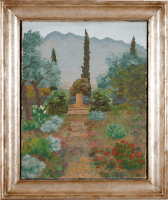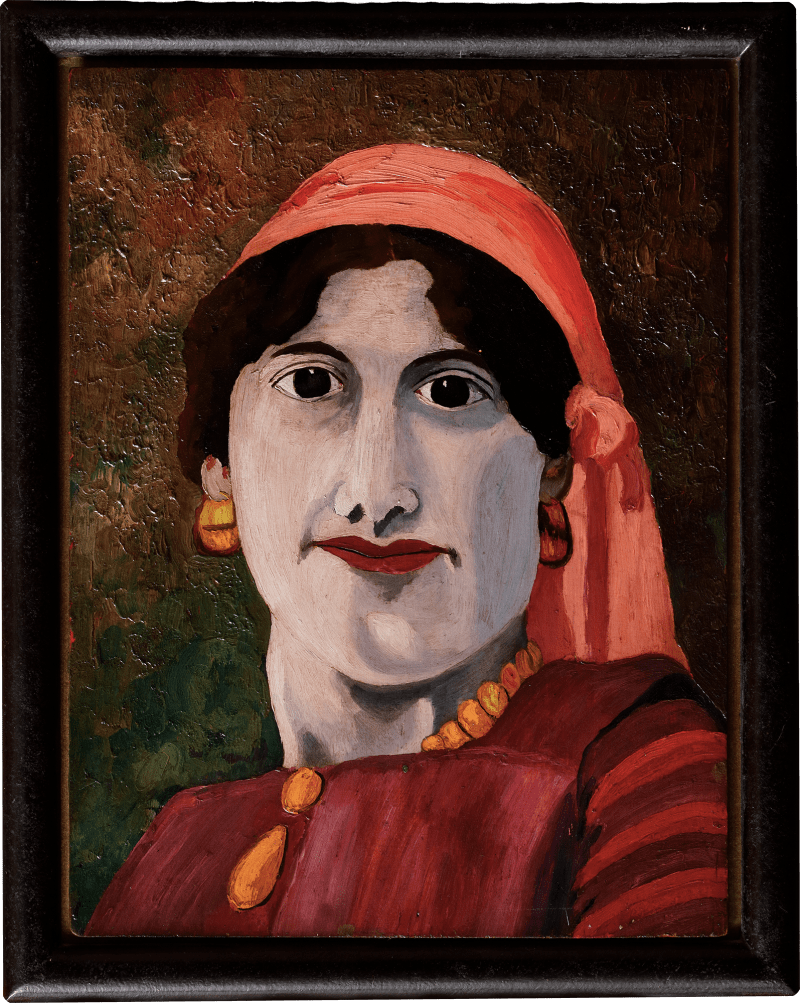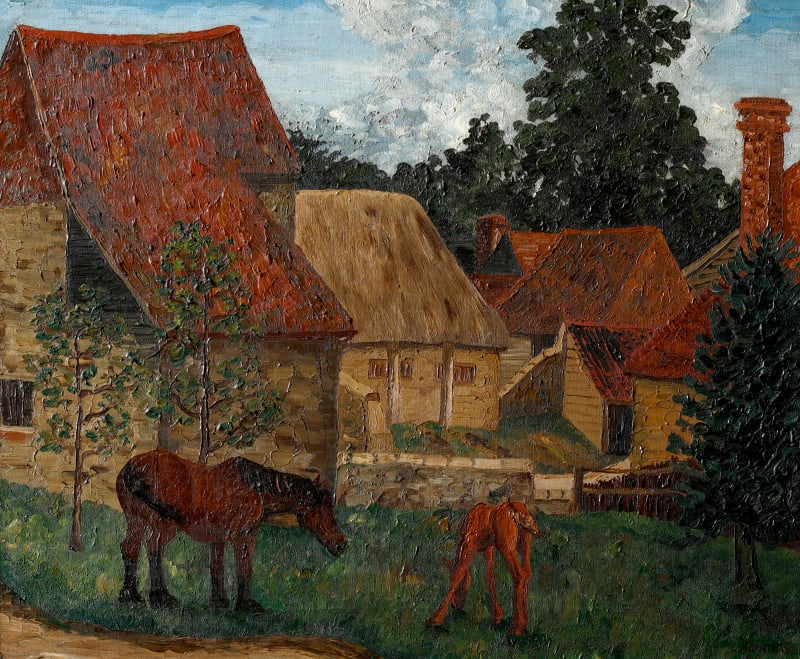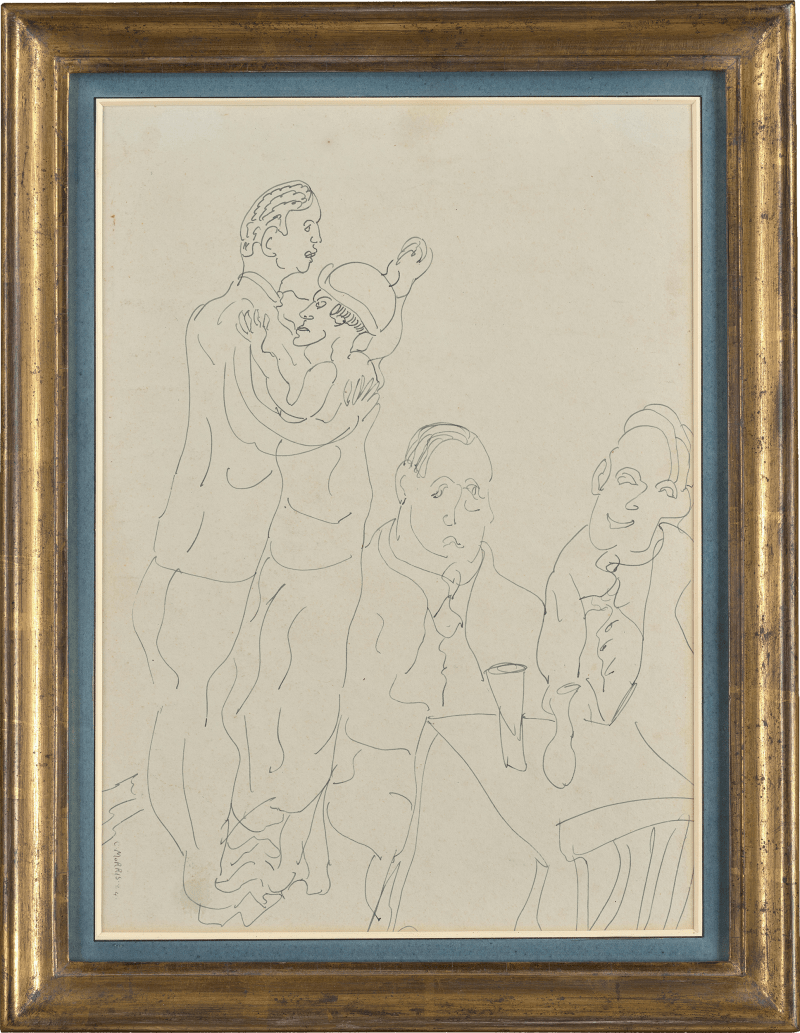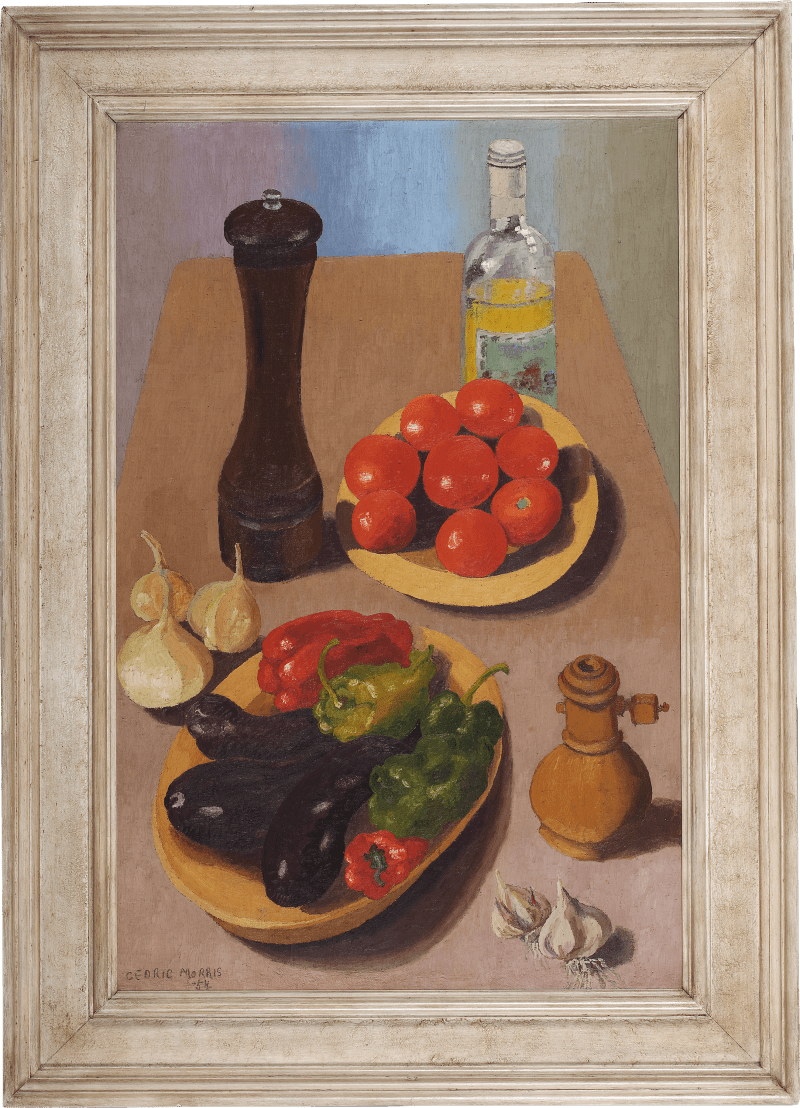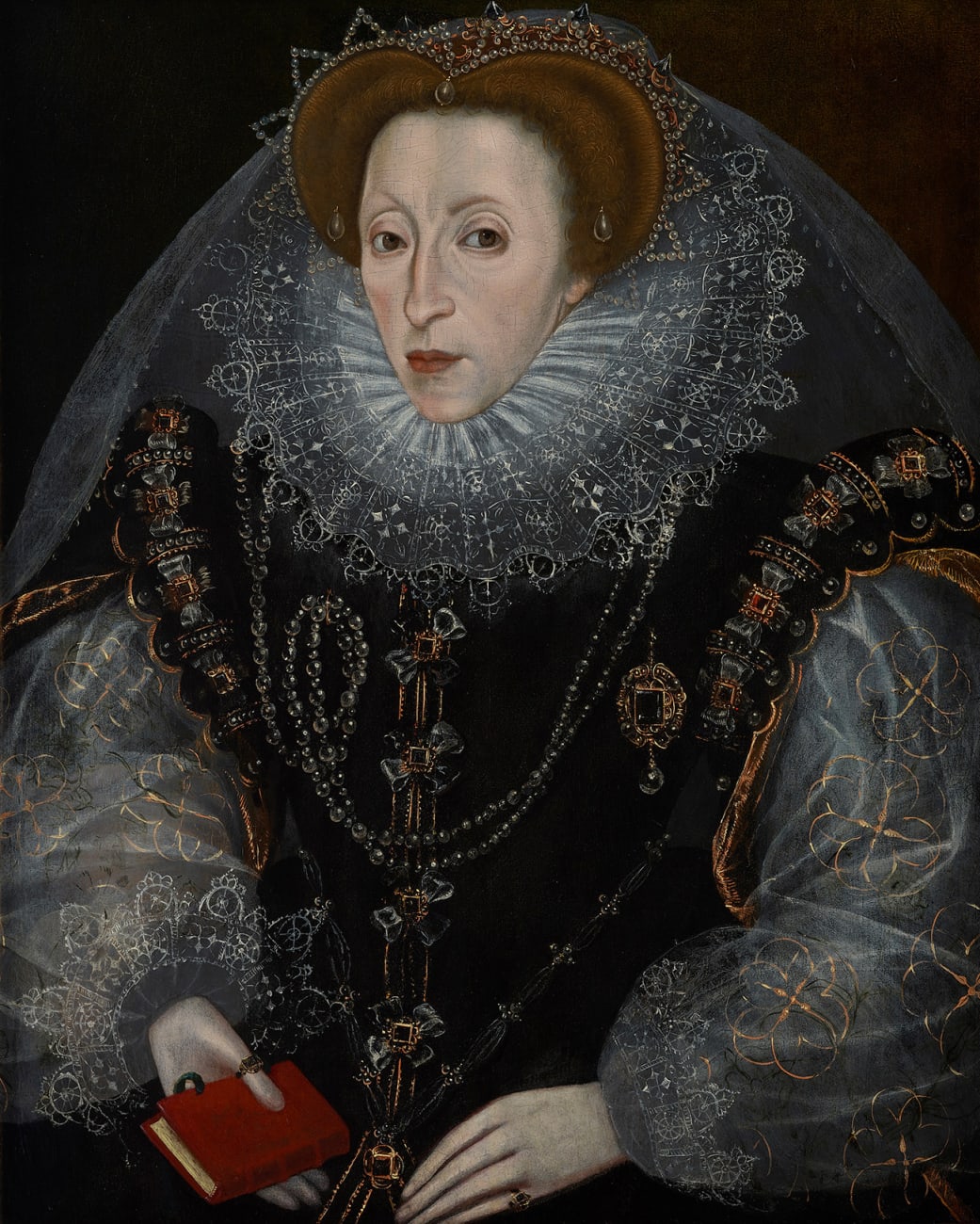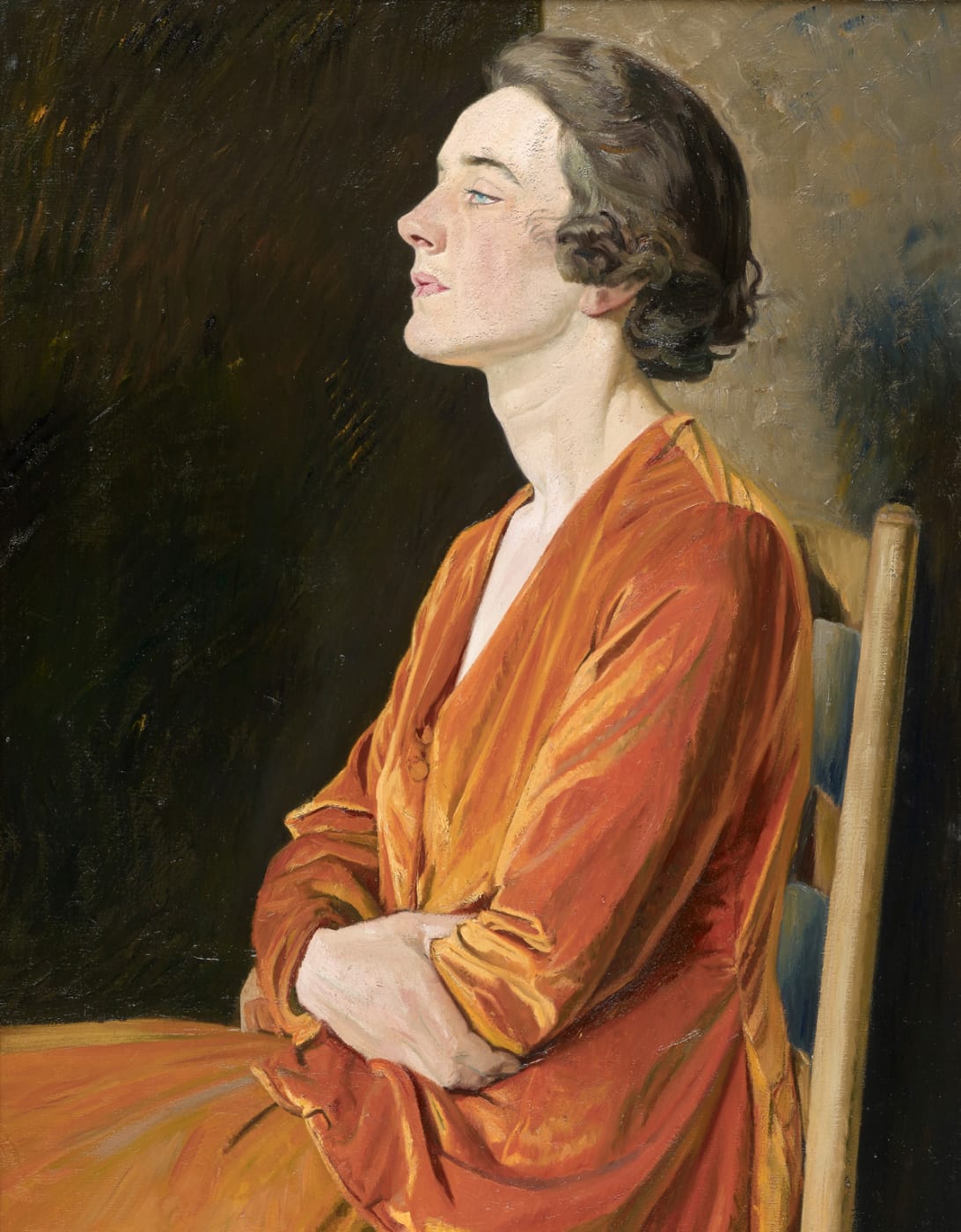

Cedric Morris
(1889-1982) Cyprus GardenProvenance
Michael Lloyd;
Private Collection, U.K;
Bonhams, London, 19 March 2019, consigned by the above;
Philip Mould Gallery, London, acquired from the above.
Exhibitions
Philip Mould Gallery, London, Garden to Canvas: Cedric Morris and Benton End, 18 May – 20 June 2025.
Painted during the winter of 1973, Cyprus Garden reflects the intertwined passions of Cedric Morris as a painter and plantsman. The cypress-lined path and densely planted borders evoke both the flora of the Mediterranean and the horticultural experimentation that defined his celebrated garden at Benton End, Suffolk.
Known as an ‘Artist Plantsman’ Morris had a strong interest in varieties of plants and took this as inspiration for many of his works. From time to time Morris would sell to bulb and seed firms and would use the money, alongside the earnings gained from sold paintings, to fund his extended trips to warmer climates.[1] Each winter Morris would travel abroad in search of subject matter to paint and exotic plant seeds to take back to his home. As Christopher Neve and Tony Venison note in their 1979 article on Benton End, the garden was a ‘collector’s cabinet which came to include many discoveries on expeditions abroad’.[2]
During the winter...
Painted during the winter of 1973, Cyprus Garden reflects the intertwined passions of Cedric Morris as a painter and plantsman. The cypress-lined path and densely planted borders evoke both the flora of the Mediterranean and the horticultural experimentation that defined his celebrated garden at Benton End, Suffolk.
Known as an ‘Artist Plantsman’ Morris had a strong interest in varieties of plants and took this as inspiration for many of his works. From time to time Morris would sell to bulb and seed firms and would use the money, alongside the earnings gained from sold paintings, to fund his extended trips to warmer climates.[1] Each winter Morris would travel abroad in search of subject matter to paint and exotic plant seeds to take back to his home. As Christopher Neve and Tony Venison note in their 1979 article on Benton End, the garden was a ‘collector’s cabinet which came to include many discoveries on expeditions abroad’.[2]
During the winter of 1973, Morris travelled to Cyprus. Having visited once before in 1967 and painted works such as Turkish Village in Cyprus, characterised by his bold use of rich violet colours, Morris was clearly inspired by the Mediterranean landscape. He was known to ‘meander about slowly, watching things move, a ladybird on a leaf, someone rubbing lavender into a basket, an altercation between gardeners…a twinkle lurking in his eye’.[3] The meticulous way in which Morris worked by applying short confident strokes with minimal preparatory drawing gives the painting immediacy and personality. In Cyprus Garden, the array of flowers in rich hues of red, pink, and purple paired with the blues and greens of Mediterranean shrubbery provide an accurate insight into the inspiration that Morris drew from when abroad.
Although little documentation survives of the precise garden layout at Benton End, paintings such as Cyprus Garden offer valuable insights into the horticultural vision that inspired Morris as a gardener. This vibrant composition, a tangle of red, pink, and purple blooms set against the cooler blues and greens of Mediterranean shrubs, reflects Morris’s profound interest in the flora and fauna of southern Europe. Mediterranean gardens were a crucial influence at Benton End as it shared the same gravelly lime soil that constituted the perfect foundation for Mediterranean plants to thrive. The central path depicted here, flanked by dense planting and cypress trees, recalls the pathway that originally existed at Benton End, where Morris had planted his own Cypress trees.
[1] Morphet, R. (1984) Cedric Morris. London: Tate Gallery, p. 66.
[2] Neve, C., and Venison, T. (1979) ‘A Painter in his Garden’, Country Life, 17 May, pp. 1532-4.
[3] Tyner, C. (1983) Letter to Richard Morphet, 19 August 1983 (Mrs. Chloe Tyner was the daughter of Madame Elspeth Champcommunal with whom Cedric stayed in Vaucluse at Giverny).
